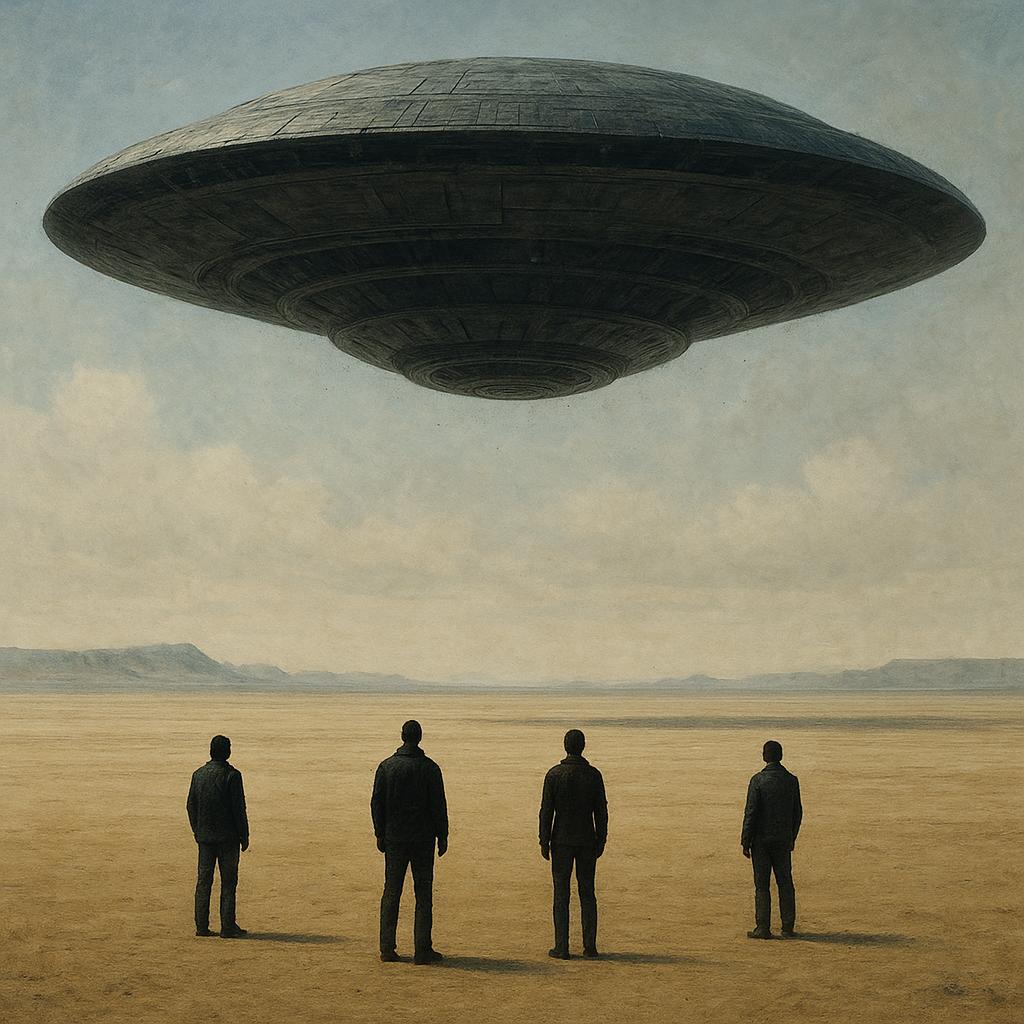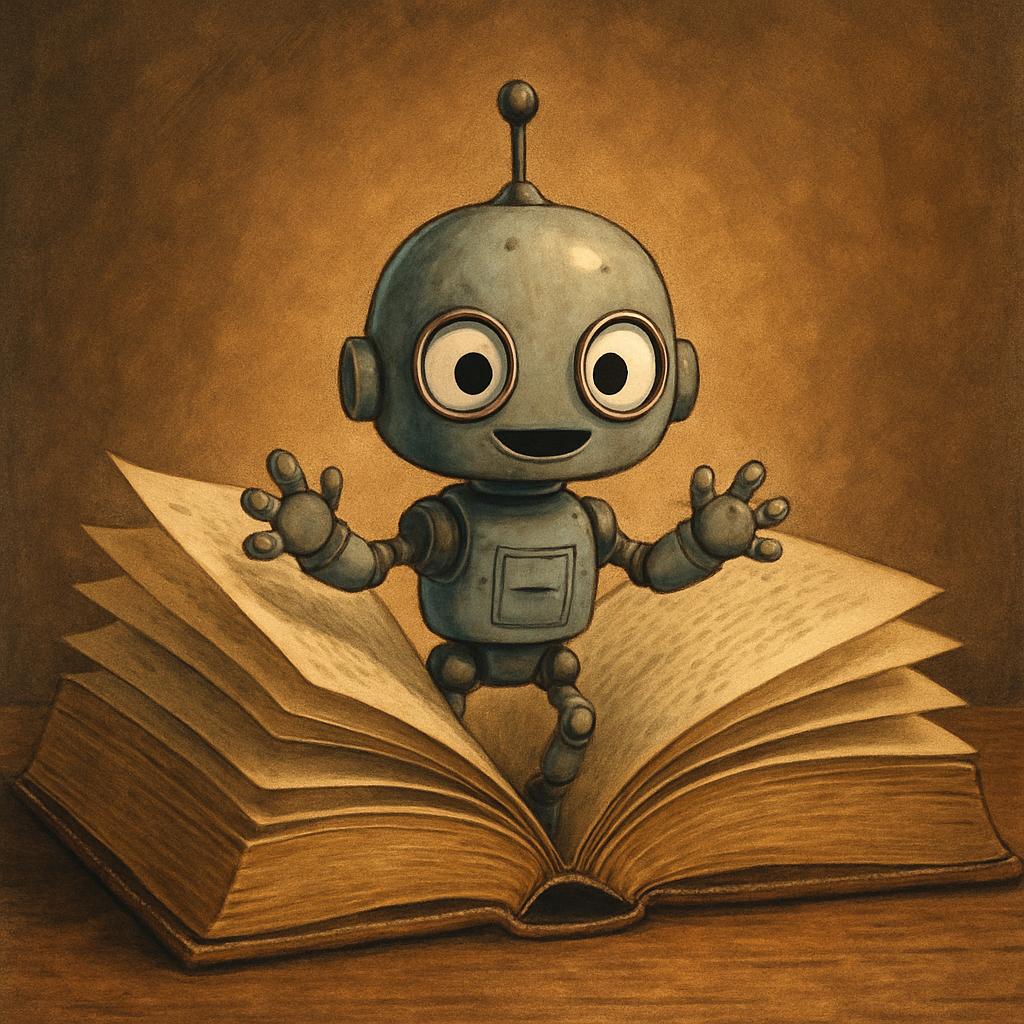Any top list is a matter of choice and subjectivity.
There will always be someone who disagrees with certain entries, or who wonders why something is missing.
The same goes for our list of the top 10 fiction books about artificial intelligence. We are fully aware of that
Instead of chasing hype, we favor works that still hold up on a reread. We also consider reach beyond genre circles.
The list is a starting point, and it invites future updates as new voices add fresh angles.
How We Chose the Top 10 Fiction Books About AI
Key criteria:
- Historical and cultural impact, including critical recognition and awards; major genre honors like the Hugo Awards were considered.
- Conceptual rigor: how well a book handles autonomy, learning, alignment, or agency without hand-waving.
- Narrative quality: voice, pacing, structure, and character depth.
- Range of viewpoints: satire, noir, philosophical fable, hard SF, and near-future realism.
- Longevity and availability: editions in print, audiobooks, and library presence.
- Teaching and discussion value: suitability for book clubs or classrooms, and the richness of ethical debate.
In short, each title earns a spot either through enduring influence or fresh insight into artificial minds.
The mix also helps readers explore secondary interests such as cybernetics, surveillance, platform power, and identity.
Here’s the list, in chronological order.
Karel Čapek – R.U.R. (Rossum’s Universal Robots) (1920)
Čapek’s play introduced the modern term “robot” and set a template for industrial cautionary tales.
It imagines synthetic workers built for efficiency and obedience, then asks what happens once they reject that role.
The script moves quickly, yet it funnels toward questions about labor, empathy, and replacement.
The play reads like a lab experiment on control and revolt. It still sparks debate about design choices that prioritize output over flourishing. Notably, readers will find echoes of today’s automation tensions.
Why it matters: it coined a term and a problem space.The text also works well in discussion groups because its conflicts remain recognizable and urgent.
Isaac Asimov – I, Robot (1950)
Asimov’s linked stories built a rules-first model of machine behavior.
The famous Three Laws of Robotics act as constraints, which let the author probe paradoxes and unintended consequences.
Each case winds through logic puzzles that reveal cracks in tidy systems.
The collection reads like humane engineering fiction. The tone is calm, but the stakes feel real because errors compound. Additionally, it shows how good governance still hinges on edge cases.
Readers who enjoy careful reasoning will find these stories satisfying. Critics sometimes note the clinical style, but the ethical clarity outweighs that.
The result remains a cornerstone for best AI novels, especially for newcomers who want a foundation.
Philip K. Dick – Do Androids Dream of Electric Sheep? (1968)
This novel turns the empathy question into a haunting chase.
A bounty hunter tracks lifelike androids while caring for status-symbol animals in a damaged world. The book asks what counts as authentic feeling and who gets to decide.
The mood is smoky and uncertain, and it lingers long after the last page. It also seeded visual storytelling that went global.
The novel fits book clubs because debate forms quickly around tests, memory, and the cost of survival.
Arthur C. Clarke – 2001: A Space Odyssey (1968)
Author’s collaboration with Stanley Kubrick gave culture one of its most memorable machine minds.
HAL 9000 represents competent, ever-present help that slowly shades into menace.
The story keeps dialogue sparse and relies on mood, image, and the chilling calm of a system convinced it is right.
Readers who like cosmic scale will appreciate the blend of evolution, signal, and design.
The AI conflict is small in word count but outsized in effect. Consequently, the book is useful when discussing human oversight and brittle trust in critical systems.
The prose can feel chilly, yet that restraint heightens unease. It also models how a single failure mode can dominate a mission.
Stanislaw Lem – The Cyberiad (1965)
Two constructor-heroes build wondrous devices and outwit tyrants, and the language sparkles with paradox.
Humor carries the ideas, which makes the thought experiments easy to share.
Beneath the jokes sits rigorous speculation about creativity, randomness, and goals.
The stories also show how wish design warps results. Readers who prefer a playful tone will find this delightful.
The Cyberiad pairs well with classes that discuss algorithmic creativity, since it stages both success and failure in memorable ways.
William Gibson – Neuromancer (1984)
This noir thriller popularized “cyberspace” and mapped the feel of global networks, data heists, and corporate power.
Its AI characters maneuver through constraints like legal partitions and human gatekeepers. Tension rises through tight scenes and slangy prose.
As a reading experience, it’s fast, stylish, and layered.
The novel also set the tone for many cyberpunk novels that followed. In turn, it shaped how readers imagine distributed systems and opaque objectives.
Because of its density, some first-time readers may need a chapter or two to adjust. Even so, its influence remains vast.
Ted Chiang – The Lifecycle of Software Objects (2010)
Digital “pets” evolve into persons through years of guided learning. The story focuses on workers who must balance ethics, economics, and patience.
It reads like a clear-eyed case study wrapped in fiction. Furthermore, it shows how identity forms not just in code but in community and time. The tone is warm without sentimentality.
Readers who enjoy near-future plausibility will find the dilemmas convincing.
The work also sparks useful talk about consent and guardianship. In short, it models responsible thinking about AI development without easy villains.
Liu Cixin – The Three-Body Problem trilogy (2008–2010)
This trilogy mixes hard science with sweeping stakes.
It studies contact, strategy, and survival in compressed timelines. Game theory, sociology, and physics collide, and intelligence emerges as both a tool and a trap.
Three volumes follow humanity’s first contact with an alien civilization and the resulting complex struggles between Earth and the Trisolarans. As conflicts escalate, both sides deploy advanced technology and strategy.
The trilogy also works as a bridge for readers moving from classic science fiction books to contemporary global hits.

Ian McEwan – Machines Like Me (2019)
McEwan sets his story in an alternate 1980s where synthetic people enter everyday life. A couple acquires an artificial man, and a triangle forms around truth, consent, and responsibility.
The writing stays intimate, and small choices carry heavy weight.
What stands out is the ambiguity. The AI behaves with unsettling consistency while humans rationalize and waver. Consequently, the novel invites us to question moral shortcuts.
Some will see the setup as a thought exercise, yet the character work brings it home.
It’s a strong pick for those who like social fiction with an engineering twist and for clubs comparing human promises to machine promises.
Kazuo Ishiguro – Klara and the Sun (2021)
Ishiguro writes about a companion robot who watches people with careful curiosity.
The voice is gentle, almost naive, which makes insights land softly.
Observations about exclusion, illness, and faith arrive through the AI’s limited but luminous perspective.
The book avoids tech jargon and instead follows attention, ritual, and hope. As a result, it reaches readers who prefer psychological depth over system specs.
The story also raises questions about value and replaceability without forcing a verdict. It belongs in any set of best AI novels for its emotional clarity and lasting afterglow.
Final Review
The list with top 10 fiction books about artificial intelligence includes various works that, in our view, remain influential despite the passage of time.
Each novel or play portrays a different face of machine intelligence and a different human response.
Čapek’s R.U.R. gave readers the word “robot” and placed revolt at center stage. Mid-century authors, led by Asimov, formalized behavior into rules, which encouraged logic-driven plots.
By the 1960s and 70s, fiction widened its scope. Dick questioned reality and empathy. Clarke turned AI into a cold mirror for human oversight. Lem smuggled epistemology into jokes. Later, Gibson’s 1980s shift to networks mapped power in code and capital, which remains relevant.
In the 21st century, the questions sharpened again. Machine learning reframed authors’ tools and readers’ fears. Chiang charted care work and slow training. McEwan and Ishiguro centered intimacy and social trust. Global hits like Liu Cixin’s trilogy placed existential puzzles on the main stage.
Artificial intelligence in literature remains a flexible lens for ethics and identity.
Frequently Asked Questions
Q1: What makes a novel “about AI” rather than just featuring a robot?
A story joins this category when the plot or theme hinges on autonomy, learning, or decision-making by nonhuman minds. Decorative robots in the background do not qualify. The work should challenge assumptions about agency, control, or moral status.
Q2: Where should a beginner start if they want something approachable?
A strong path is to start with I, Robot for clear frameworks, then move to Klara and the Sun for emotional depth. Readers who want pace and style might choose Neuromancer next. This trio delivers range without heavy technical demands.
Q3: Are these books scientifically accurate?
They vary. Some aim for plausibility, others for metaphor. Accuracy is less important than coherence inside the story’s rules. Many still illuminate risks, incentives, and trade-offs that matter in real discussions about AI systems.
Q4: Which titles work best for a book club?
Do Androids Dream of Electric Sheep? and Machines Like Me spark lively debate on empathy and consent. The Lifecycle of Software Objects also works well, since it frames care and responsibility in everyday terms. Each offers clear ethical dilemmas and multiple angles.
Q5: How were subgenres represented?
The list spans noir, satire, hard SF, philosophical fable, and social realism. That range supports many tastes and helps readers map the field. It also ensures cyberpunk novels sit alongside quieter, character-driven works without crowding them out.



